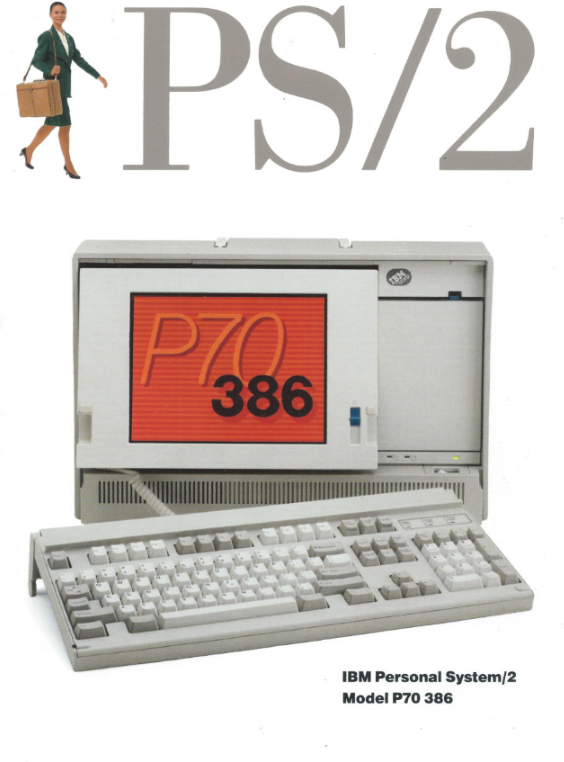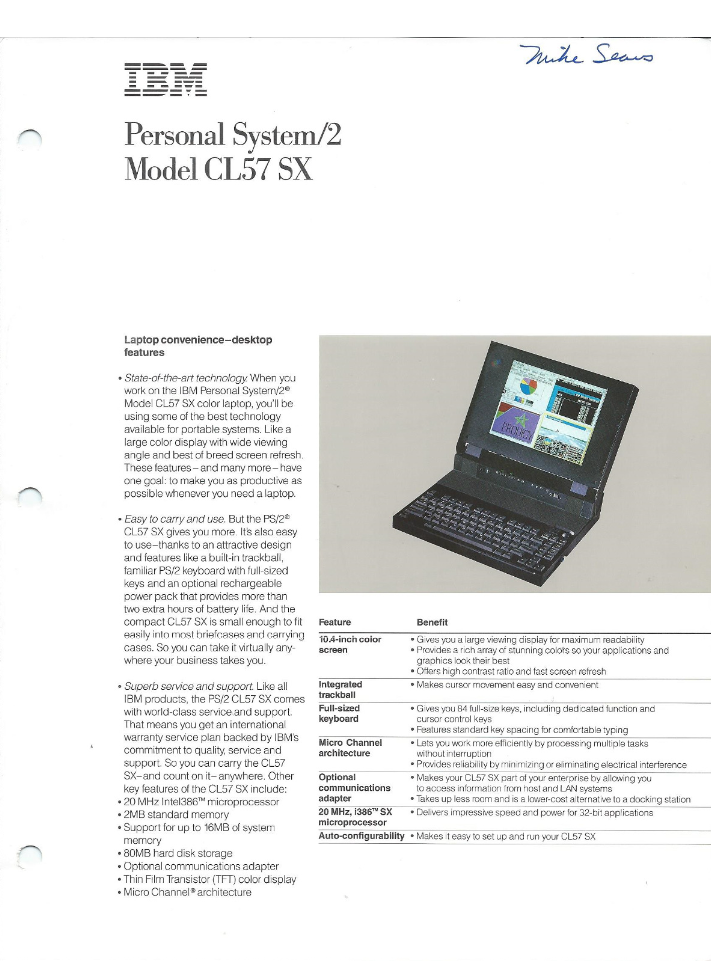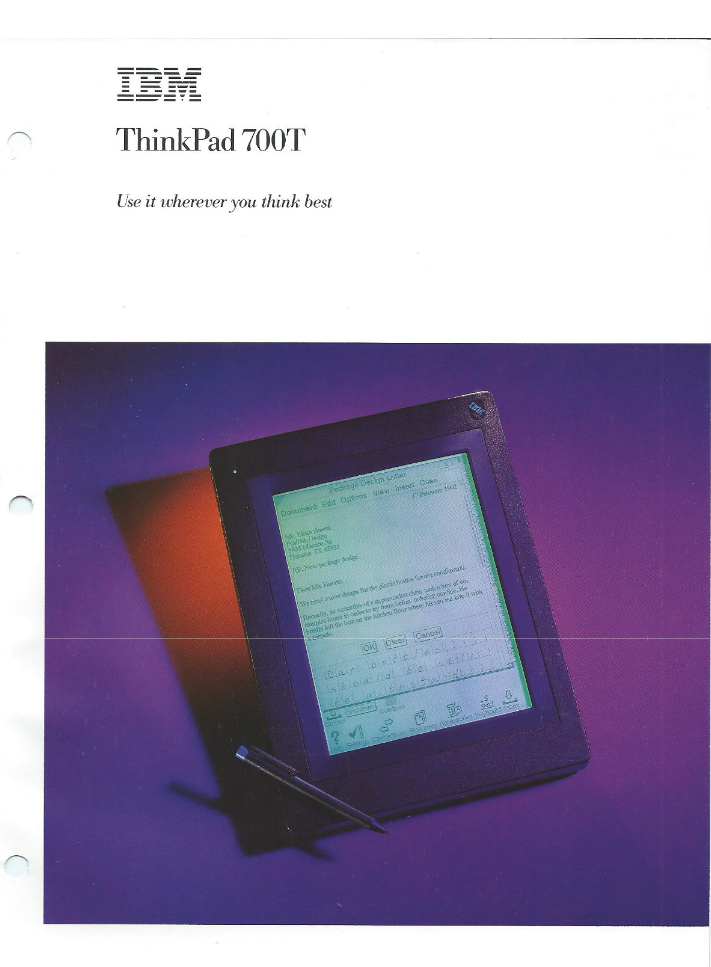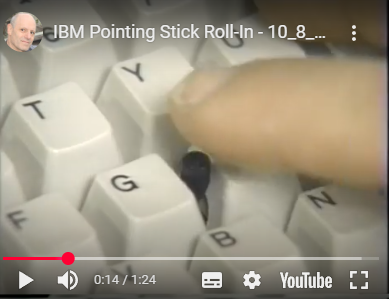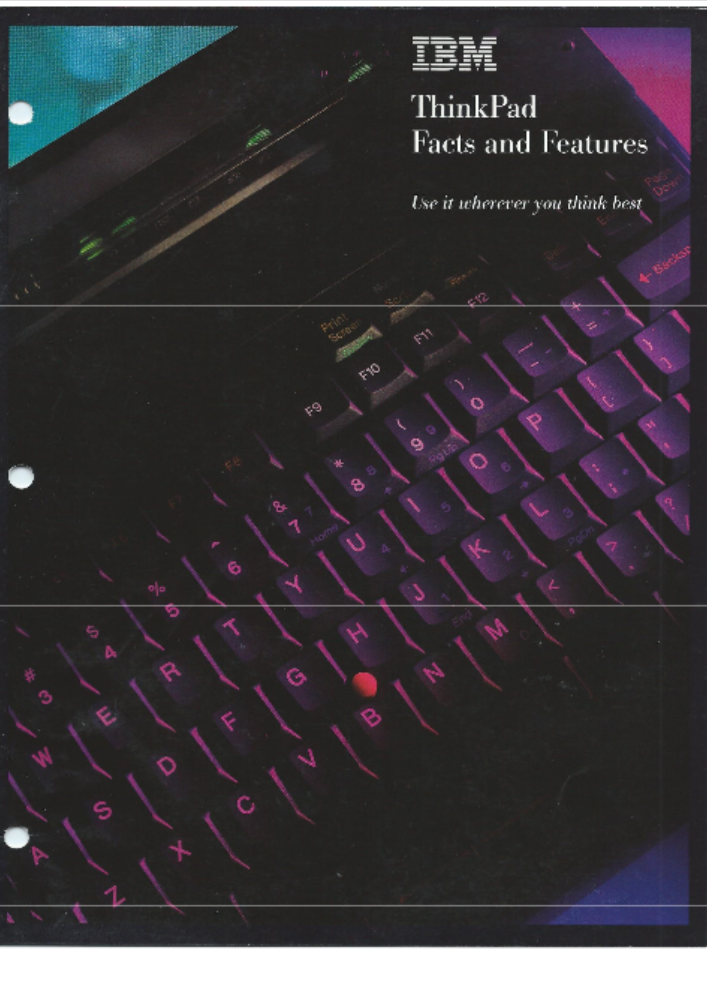IBM had a very long and troubled history in the development and release of portable machines. It's first machines were playing catchup to it's competitors, all of which existed within a space and time where the technology to enable a great mobile experience simply didn't exist.
For nearly a decade, IBM's portable machines were saddled with heavy displays which caused eye-strain, little or no battery life, lacklustre features and mind-numbing model names.
Early Attempts
IBM's various first attempts to develop portable computers included it's very early unreleased 'Scamp' and the very limited-release '5100' Portable computers.
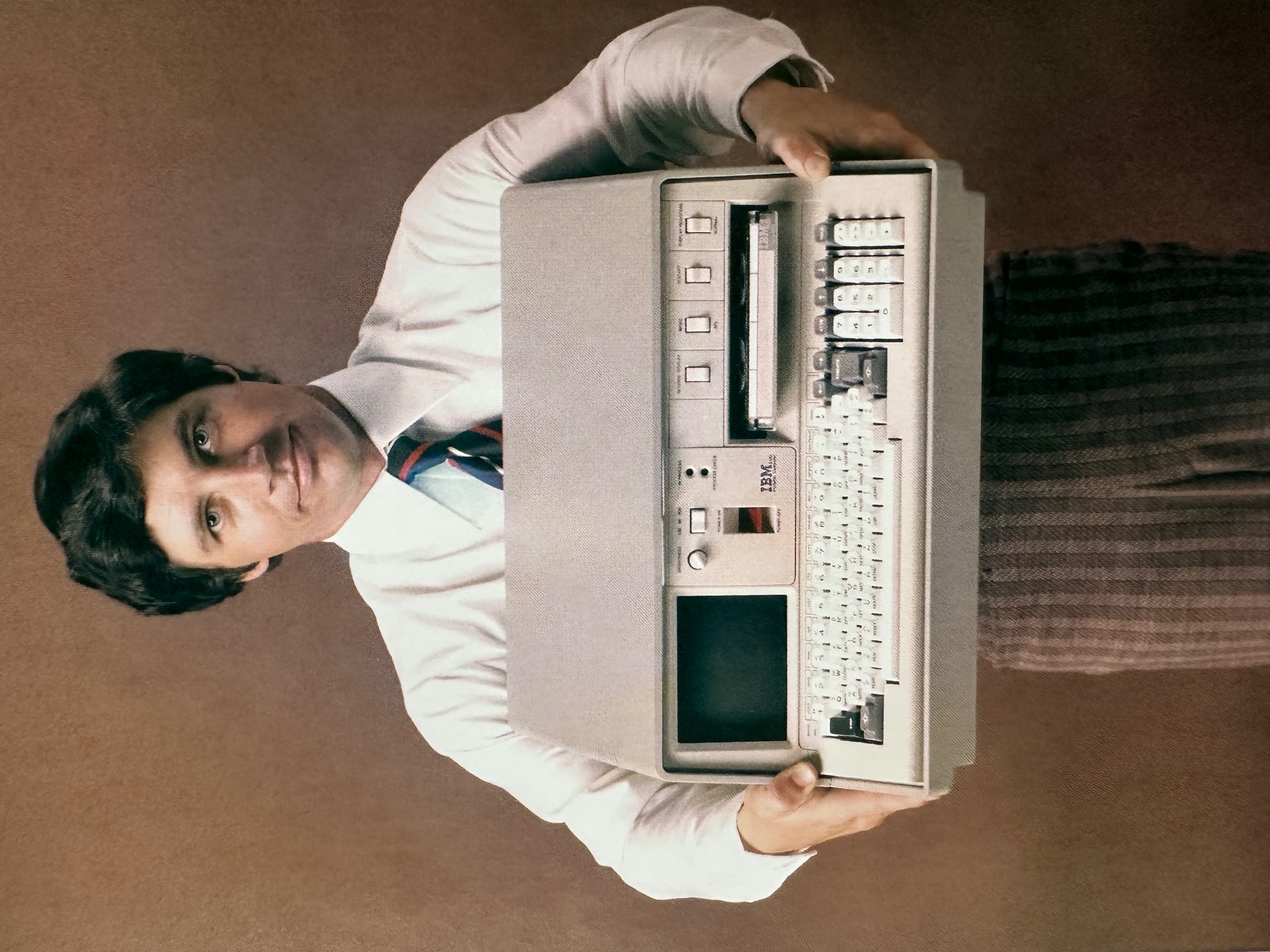
IBM 5100 Portable Computer
It's 1977 codename ‘Aquarius’, using bubble technology. Never released!
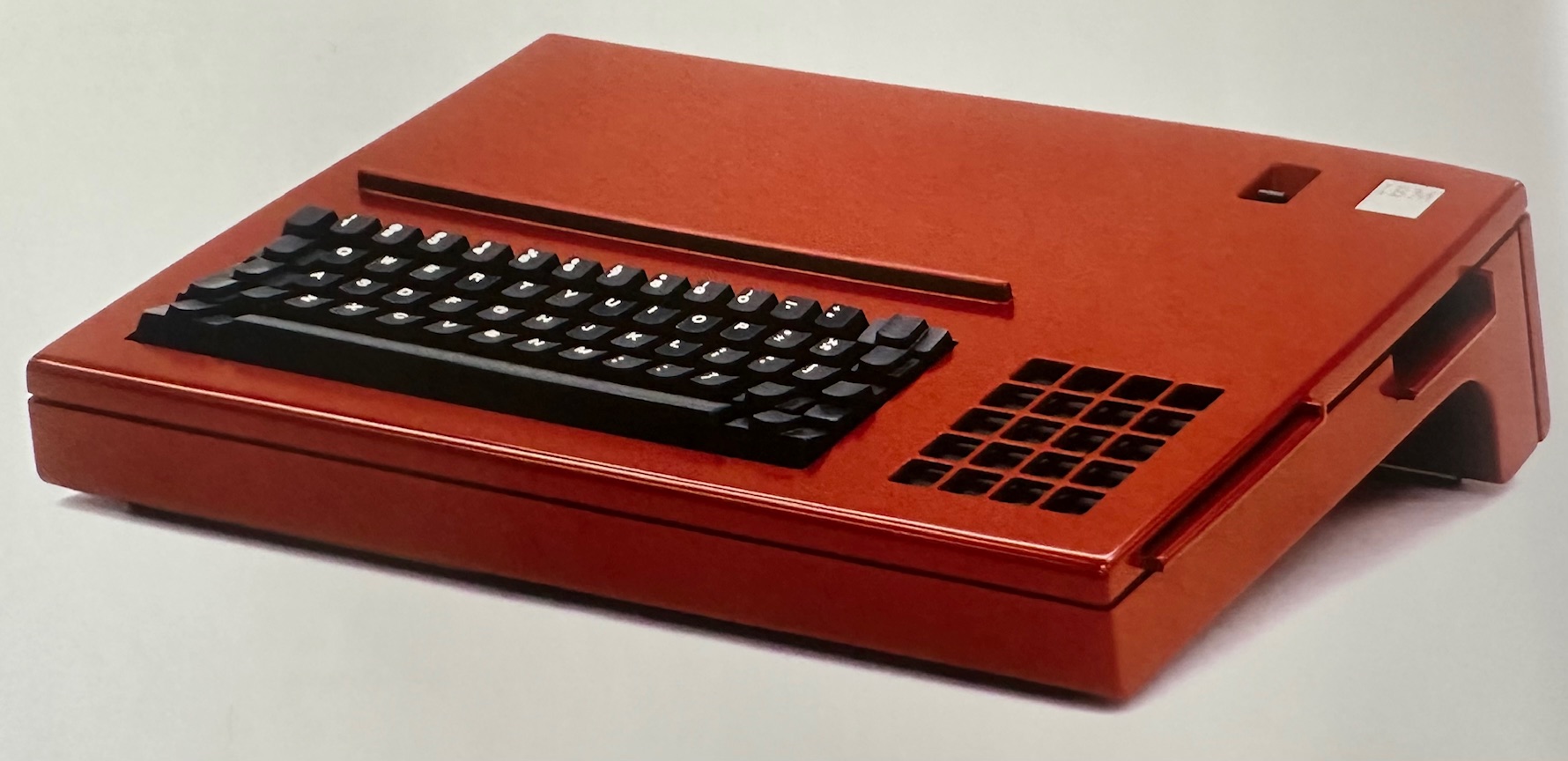 IBM Aquarius
IBM Aquarius
IBM Transportables or Luggables
By 1983, Compaq had 'clean lab' designed (not reverse engineered) it's own BIOS to enable legal cloning of IBM Personal Computers and in order so as to not directly compete with IBM, it decided to release it's first computer as a portable machine - something IBM were not doing.
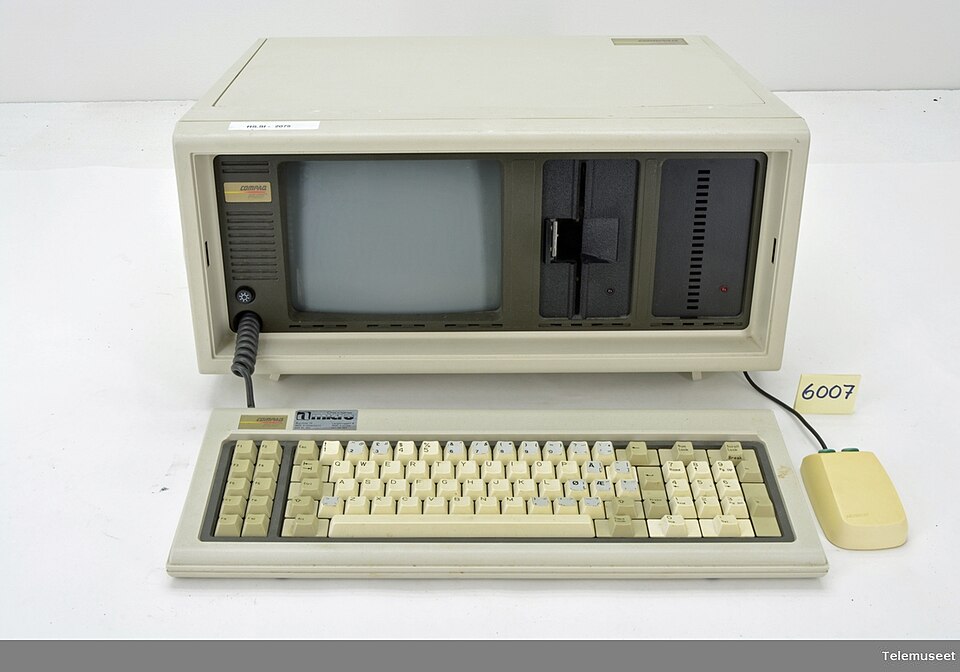
Compaq Portable
IBM's response was released in Feburary 1984 - IBM's 'Sewing Machine" 5155 Portable Personal Computer - was late, expensive, slow, heavy and with (what was considered) an awful amber screen. The market felt that didn’t look or feel good. It had no battery and had to continually be plugged in. A lot went to Harvard who eventually replaced them with Zenith machines.
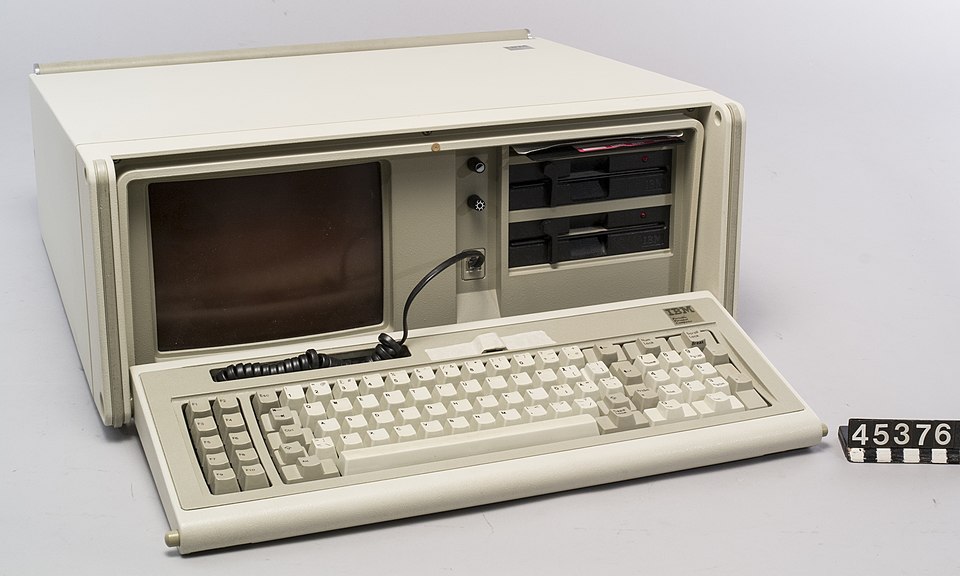
IBM Portable Personal Computer 5155
I have a complete-in-box 5155 and having been through a great deal of preservation work on it, the machine certainly won't win any awards for innovation. Inside it's distinctly a 5150 motherboard, squeezed under a CRT screen and some massive desktop drives. It looks and feels like IBM took a leaf out of the clone PC manufacturers books and cobbled together pieces of a PC already on the self. The 5155 was considered a failure.
In 1986, the IBM Convertible was a 'matrix' approach to portable system development made between the labs at Boca Raton and Austin. It was the first internationally released portable with direct Sapper design. The Convertible was a weird expandable clamshell machine all of it's own, sharing lots of peripherals with the cheaped-out IBM PC Jnr. Again, it wasn't really mobile, but transportable - as it had to be mains powered and was very big and heavy. It did, at least, have a low-energy folding flat display and a carry handle, although, what's the point, if you still have to plug it into a wall? It suffered with new deficiencies which were just as bad as those experienced with the 5155 - it was an 8086 in a 286 world, it had a terrible, monochrome and blurry display and for a portable machine, and for a computer with an ephasis on mobility, it bizarrely had no modem...initially. It also sported 3.5" floppy drives, ahead of their mass adoption when everyone still wanted 5.25" for compatibility. Data General/One were already doing a proper laptop in 1984 and the market had spoken that it just wasn't ready for 3.5" floppy drives.
The final nail may have been that IBM didn't market the machine very well.
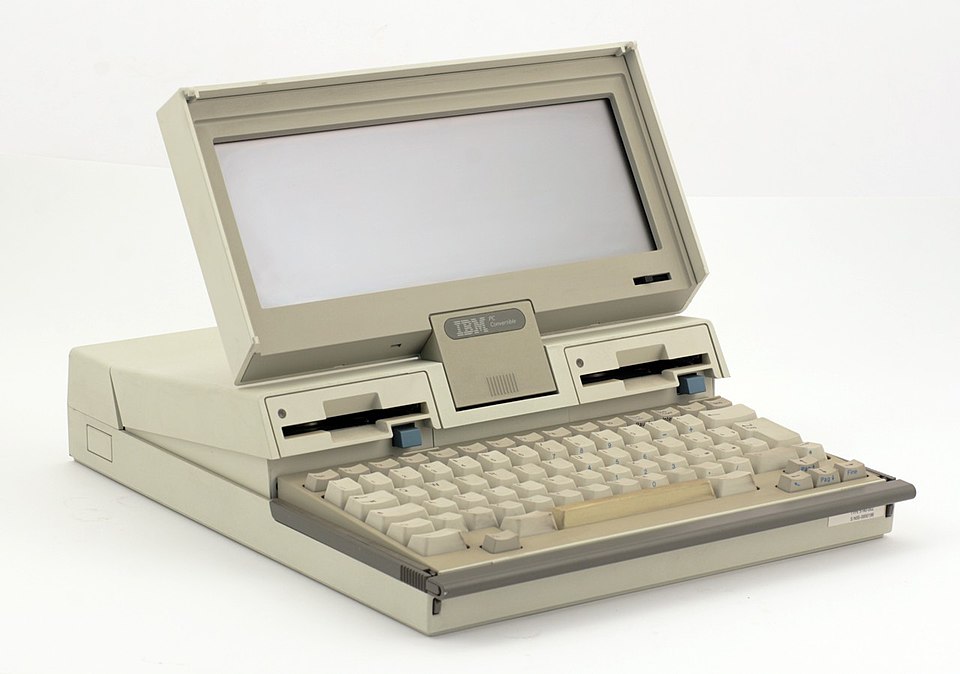
IBM Convertible
I also have a IBM Convertible complete in box and whilst it's now very much a custom-designed machine with everything inside new from the ground-up, it's a deeply flawed machine. There are many strange images online of expanded Convertibles which just go on and on forever. My experience of preservation has been distinctly troublesome, mainly due to the terrible screens. There were three iterations of the squashed display - the first, flawed, non-backlight one, a second iteration of the first one with an extra contrast slider and a final electro-luminescent blue display - which is by far the best. The first two most common panels are very hard to read and use rubber strips around the display to energise the pixels. These rubber strips are all starting to fail and despite the raw materials still be widely available, i've found them impossible to replace.
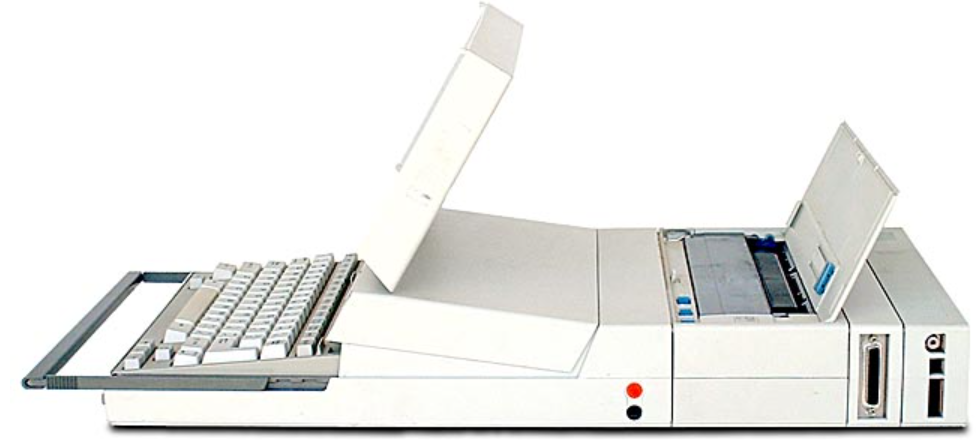
Expanded IBM Convertible with Thermal Printer, Parallel & Serial Adaptor, and CRT adaptor.
IBM Convertible Brochure #1
We also have evidence that Richard Sapper was continuing to take a more 'wild' stance on IBM's machines as we have pictures of this Convertible-inspired Sapper Prototype. Note that it retains the centre hinge convertible keyboard, along with the centred IBM logo on the lid along with Sapper's pure design head putting a bigger screen and discarding the carry handle:
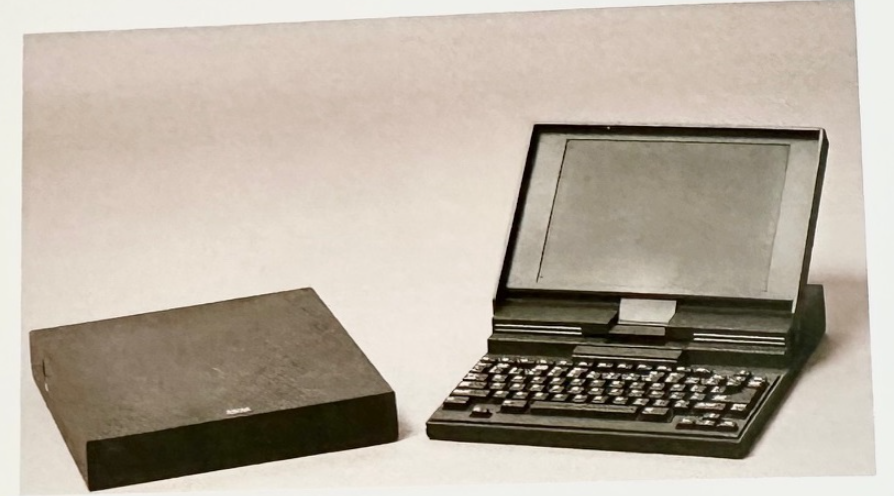
Richard Sapper's Black IBM Convertible Prototype
MCA Side Note...
In mid-1987, IBM wanted to try to claw back it's PC market lost to clone manufacturers, thus Micro Channel Architecture (MCA) was launched which would mean their PC's would run the same software, felt the same as ISA clones, but would only work with IBM hardware. The idea just didn't work because IBM-PC clones were as good or better and cheaper. If MCA had been part of the IBM PC architecture (along with the patented BIOS) from the beginning then maybe it could have worked. It also took a year for IBM to support 3rd party MCA manufacturers. Not only did this sideline IBM from a market they had created but it poisoned the PS/2 name somewhat (even within IBM).
IBM Takes Portable Personal Systems Seriously
At the end of 1988 James Cannavino was head of IBM's Entry Systems Division and was made global IBM Personal Systems manager. At this time it was clear IBM were still focused on the aging 286 CPU (bizarrely when they had secured a deal to make their own 386 processors) and OS/2.
Bob Lawten, manager of Special Development Operations was recruited by Cannavino to develop the next portable IBM, who in turn recruited Suarez who was allowed to develope a Skunkworks project to make the third IBM portable.
By September 1989 - codename "Aloha" was slowly becoming the third portable - which became the 386 PS/2 P70 'luggable'. It had a distinctive high quality thin and light plasma display and was briefly considered a success by becoming No.2 in portable market. This machine looks like it had no Sapper involvement due to it's pure technical 'means to an end' luggable design. It somewhat looks like the PS/2 guys took a slightly smaller sewing machine than the Portable was based on and used that.
The P70 and P75 took the IBM Personal Systems division from $1.4bn loss to $1.2bn profit. With the P70, IBM had finally matched the market with a luggable 'transportable' computer with a decent spec and a high resolution, blacklit plasma screen. However, rumours were abound that there was a new screen in town, which was the Japanese-designed STN. After only 5 months, the P70 and later a P75 (released Nov 90) were for nothing because STN true portable notebooks had arrived - the (albeit underpowered 286) Compaq LTE notebook PC. (Pronounced lite), quickly followed by the Toshiba T1100. Nobody wanted luggables anymore.
Weirdly there are some 'official' black ones floating around, although it seems like it was an official modification, rather than produced in an IBM factory.
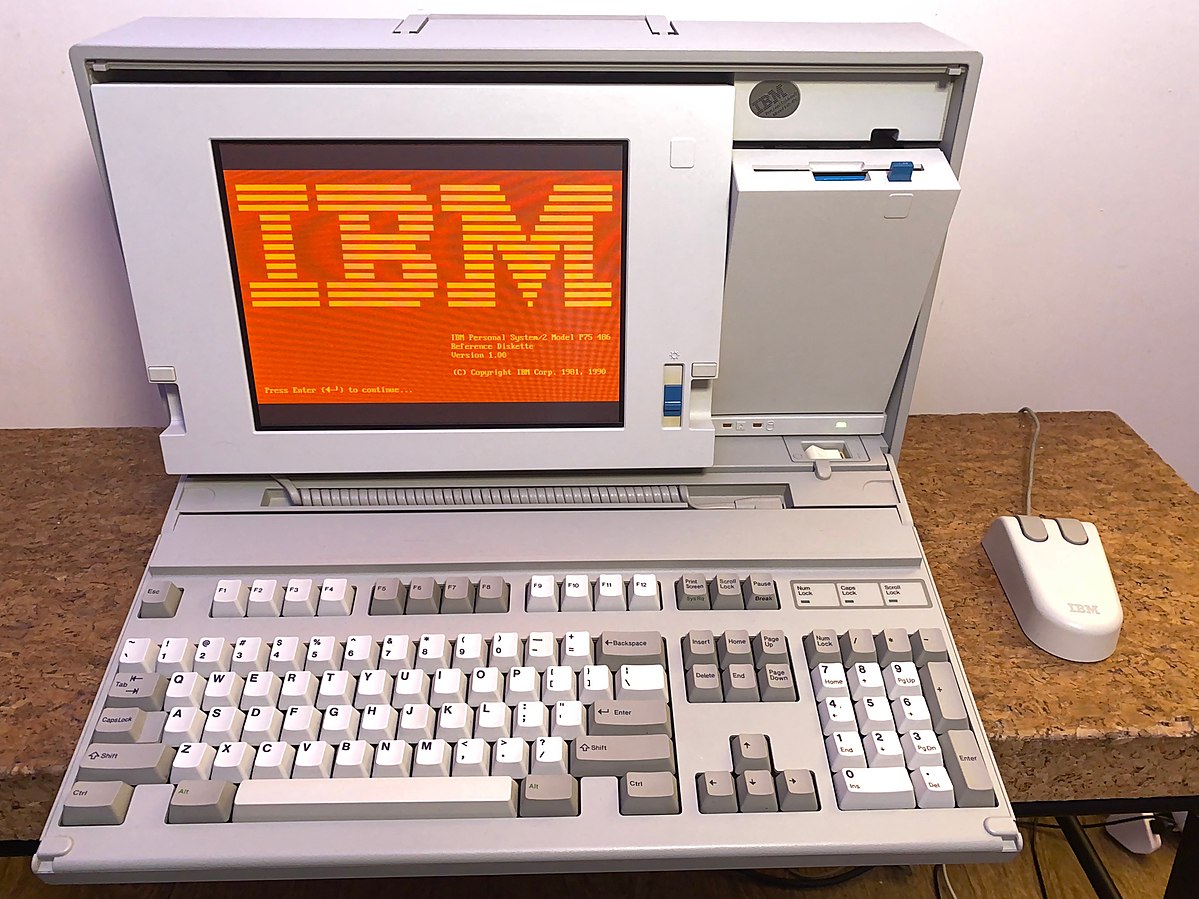
IBM PS/2 P70
The P70 and P75 are remarkably similar in design and looks to the alternative luggable released nearly two years beforehand!
IBM PS/2 P70 Brochure
The 1987 Compaq Portable III:

And here is what upset the applecart - the Compaq LTE:
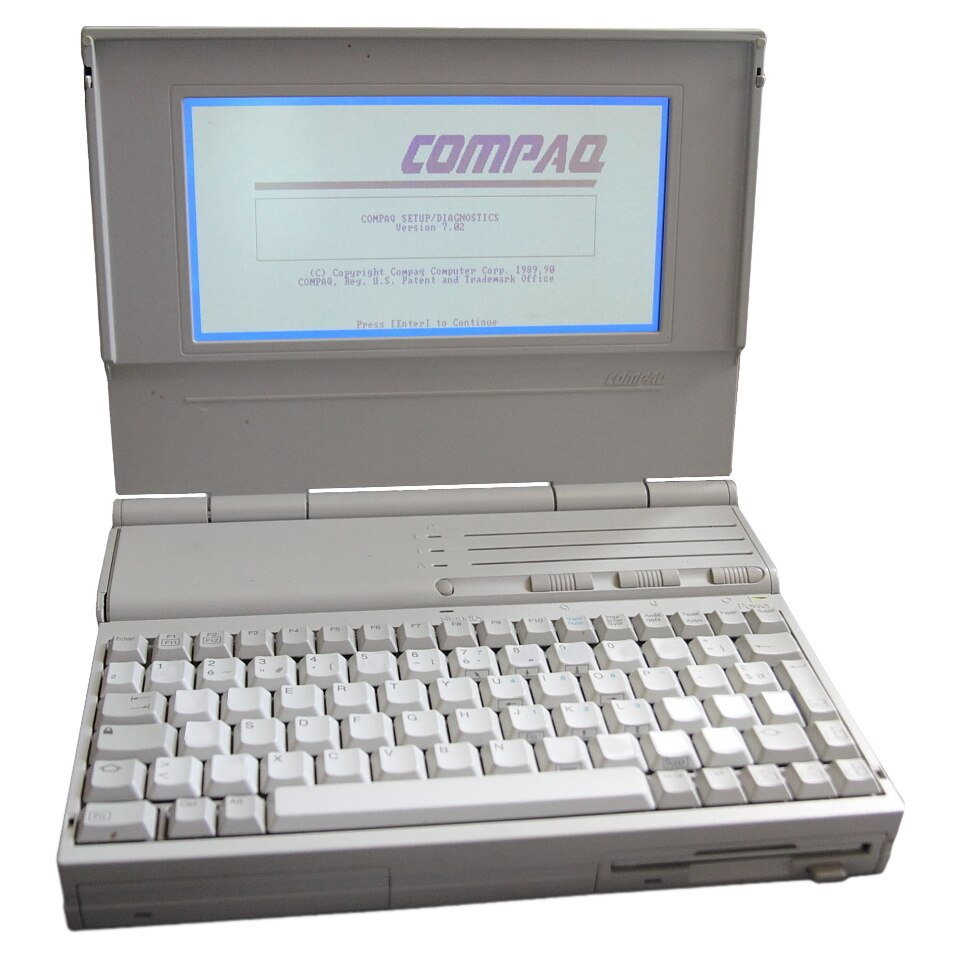
Suarez could only muster up 4 Engineers in the USA, so they went to Japan, because not only had they been developing PS/55 portables which people bought but also Yamato had excess engineers. This is how IBM's portable engineering ended up in Japan.
It's worth noting that the Data General/One had been released since way back in 1984 and is widely recognised as a machine which 'invented' the laptop' clamshell form factor, but was not particularly successful, perhaps due to the poor image display and being an early adopter of 3.5" floppy drives well ahead of it's time. You have to wonder though if IBM had moved out of it's 'not invented here' philosophy, they could have bought or copied the DG/one designs and been well ahead of the Compaq curve, which they ended up chasing for nearly a decade.
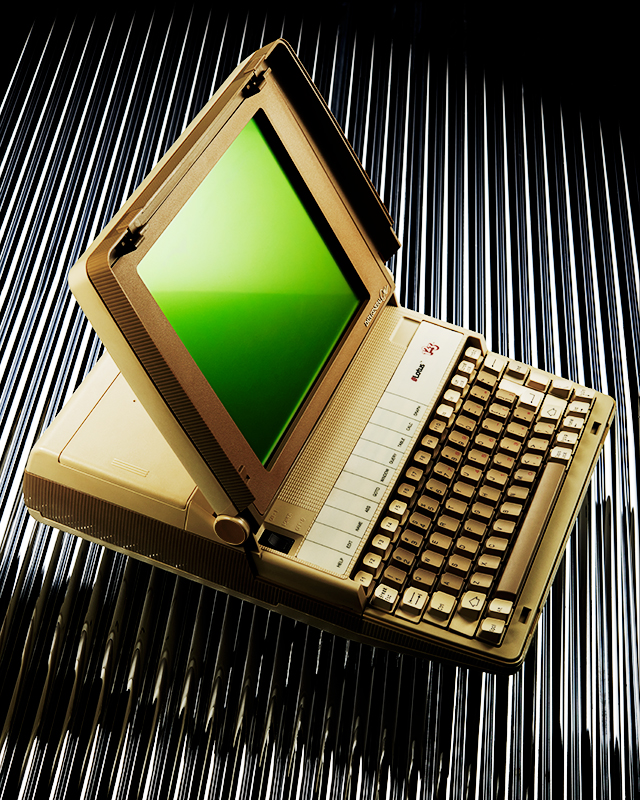
The Data General/One
IBM Desktop-Repacement Portables
PS/2 L40 SX - In March 1991, IBM's delayed and troubled response to the Compaq LTE and notebooks of it's ilk was IBM’s first cream laptop with an LCD and a 386 - the PS/2 L40SX. Unfortunately not a notebook. IBM felt that the size had to be large because it was driven by IBM’s bad experience with the small PC Jnr keyboard (best keyboard ethos drove IBM to take keyboard design from a selectric typewriter) The whole form factor was too just big although it did sell 100,000 units. This was another PS/2 'design' and therefore lacked the revelationary looks which consumers were after.
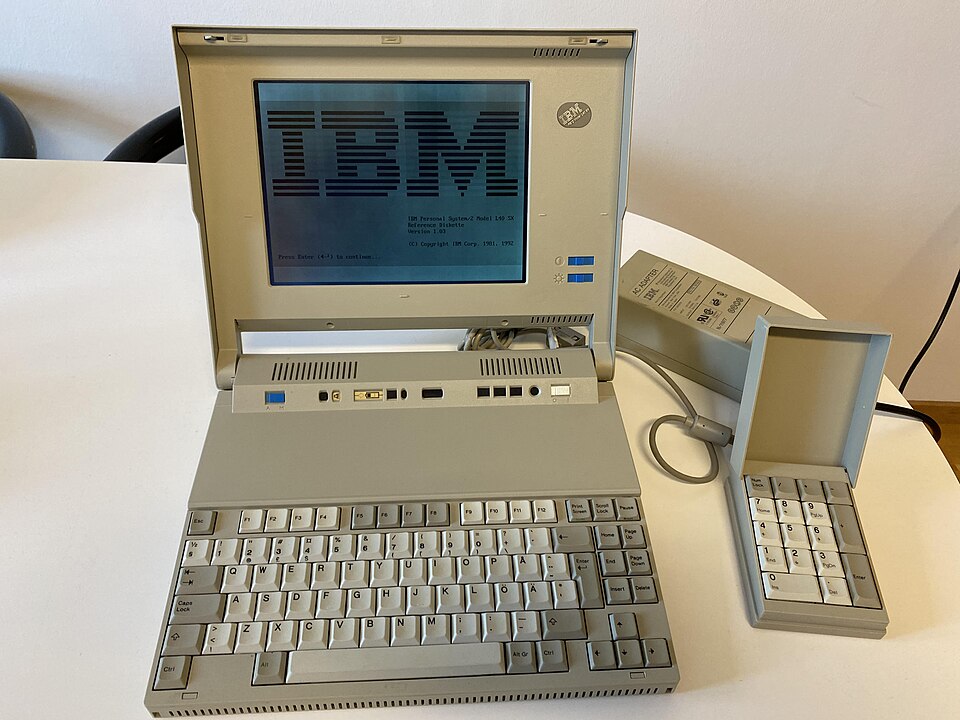
IBM PS/2 L40 SX
Ultimately, the L40SX was again failed to hit the mark, but the platform lived on as a test bed and it's Power management algorythms live on today. The L40 SX was developed further interally with a TFT 10.4” color display and trackpoint.
Richard Sapper, who saw the L40 SX - and didn't like it suggested a bunch of changes to the L40 SX (note the same floppy-snapping lid, same display sliders, same M3 keyboard layout, but with 'Sapper' keys...:
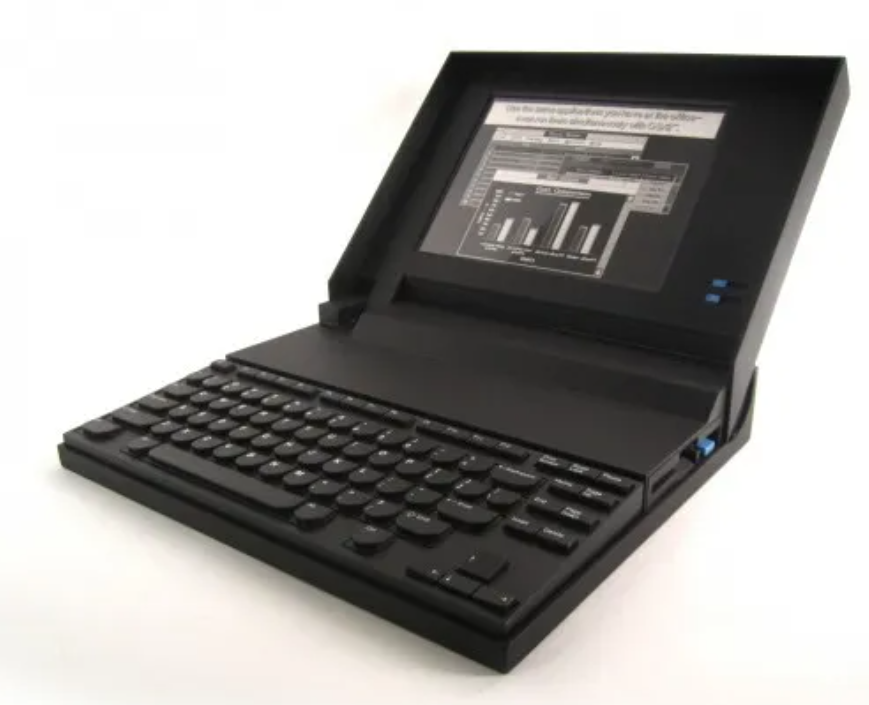
Possibly Sapper's L40SX Prototype (without pointing stick!)
What's interesting about this is that the L40 SX is sometimes referred to as 'the father of the Thinkpad' - which initially appears to hold little water. The L40 SX is so far off-the-mark, with little Sapper influence and with so many other machines lending their breakthrough technology (The CL57's screen, the PS/55 note's black notebook form...), it's difficult to see the correlation. However, when you see this re-imagined Sapper L40 SX with it's black case, better screen, angled side profile and you can kinda buy it. It's also said that these suggestions or changes were held back due to IBM wishing the 700C to make such a revolutionary impact (which is also a little far fetched as besides a 'pointing stick', most of the C52/700C 'revolutions' had been seen before in IBM machines).
Many were glad that their ideas of 'the next big thing' weren't diluted by the L40's misses.
Type 5535 Multistations - a short-lived desktop replacement' range for Japan only, in various shapes and sizes, often with quite big keyboards and screens. Some in biege, some in black. Black was certainly beginning to be considered acceptable by IBM.
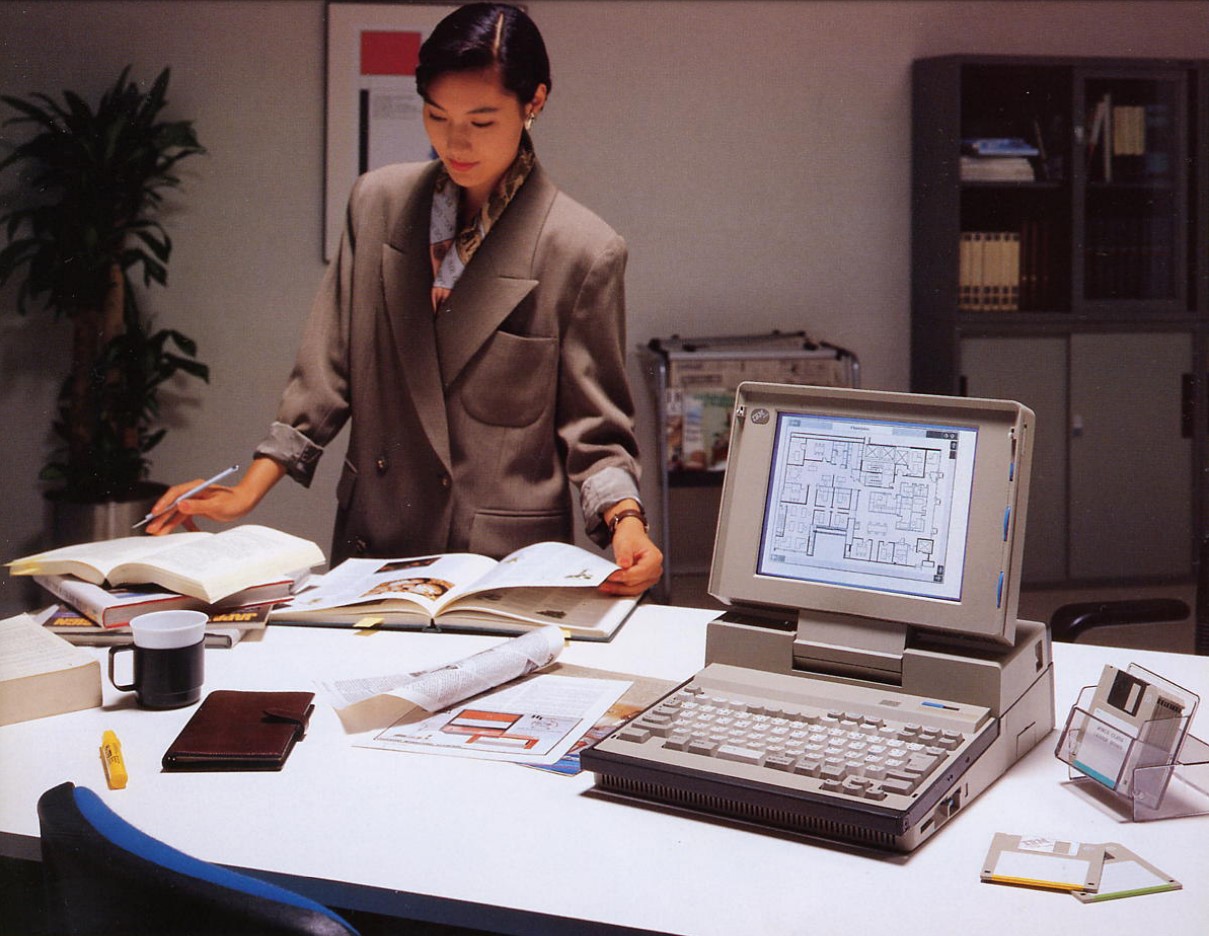
IBM PS/55 Multistation-M
PS/2 CL57 SX - A stand-out multistation under international release, 'Desktop Replacement' niche machine with it's biggest feature being a joint project 10.4" TFT Screen made by Toshiba (who commited to purchasing the other half) - a large black trackball-equipped IBM PS/2 famed for being the first notebook with a colour TFT screen. However, the CL57 is too big, it's an MCA machine and the trackball isn't very ergonomic at all. Some would say it's a multistation 'skunkworks' machine from Japan that was repackaged.from it's original N27 SX Asia branding and resold internationally. The TFT screen was revolutionary but the backlight was still too big and demanded a huge lid and bezel - once the screen's backlight was miniaturised enough to fit within a notebook chassis, IBM would have their killer feature.
If you squint, you can somewhat see how the cream L40 SX with it's full size keyboard, then the Sapper L40 SX Prototype with it's black 45-degree hinge area and plop in the 10.4" TFT to make this N27 SX, they all do look related.
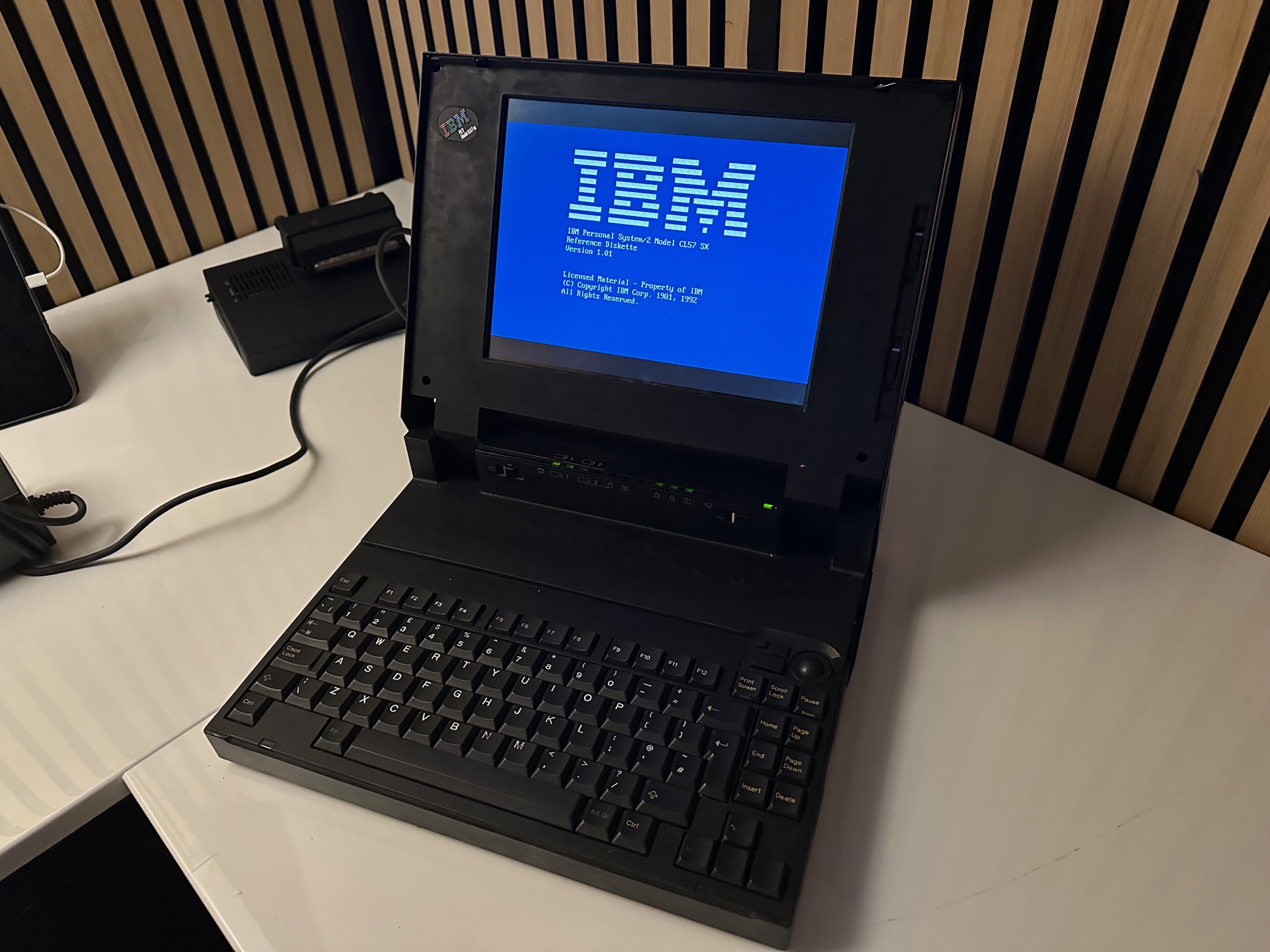
IBM PS/2 Model CL57 SX
What is a notebook? A personal computer which must run on battery and AC power, smaller than a briefcase so can easily be transported and used in temporary places. It's typically 3 inches or less in thickness and has the footprint, roughly of an A4 notebook. You may not want it as your main computer whereas a laptop typically can be a bit bigger ,has more connections / drives, still considered portable but closer to a 'desktop replacement' computer.
IBM's First Notebook (form factor computer)
Model 5499 On-Line Note - a small, notebook-style, portable mainframe terminal, pretty-much unrelated to most other machines, although it's early 'notebook' design is interesting. It is likely completely unrelated to everything else here, but it's form factor is evidence of IBM being able to design and build a true notebook form factor.
It was not a mass market machine and had virtually no processing power of it's own. It barely had any memory or storage.
If we're being chronological, the 5499 On Line note was released in October 1989 and was IBM's first notebook. However, it was not mass-market and really wasn't much use to most people. Spring 1991 saw the release of two mass-market machines - the 5523 PS/55 Note and the L40 SX. The L40 is a laptop and not a notebook. As a side-note, the PCradio was also released late 1991 and was certainly notebook-ish.
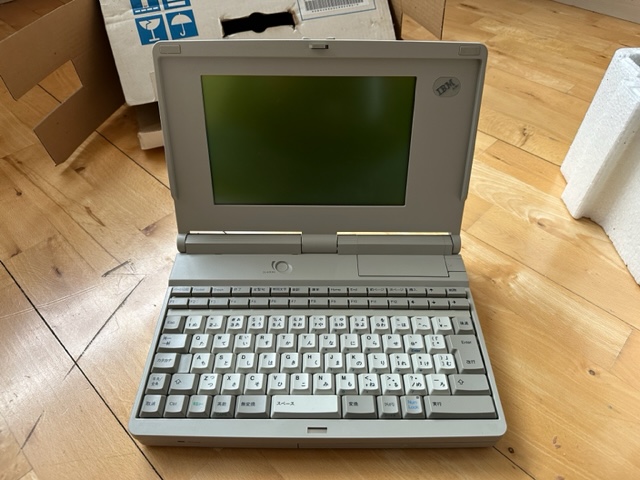
IBM 5499 On-Line Note
IBMs First IBM Notebooks
Almost in the background, under the radar, in the far east, PS/55 notes were already a proper personal notebook computer on wider release. They were all similar, black, 'me too' notebook computers selling well in Japan and then increasingly deserving and gaining an international release. There are some grey areas in their timeline, which appears to be very-much experimental, whereby some models were designed by IBM and some were designed externally, creating some dead-ends along the way (with co-operative machines created between IBM, Toshiba, Lexmark, Zenith and possibly a few others). They were being released before IBM engineers took seriously what a customer wanted - and therefore the screen, weight, battery, keyboard, no pointing device we all 'me too' and aside from the black case, far from innovative.
Sapper certainly takes some credit with the design of the PS/55 notes, which seems to carry weight given Sapper used a similar, black angular design and keyboard in the Thinkpad.
It's also amazing that one day apart, IBM USA released the beleaguered L40 SX internationally, and the PS/55 note in Japan. To look and compare the machines side by side, you'd put them at least 3 years apart.
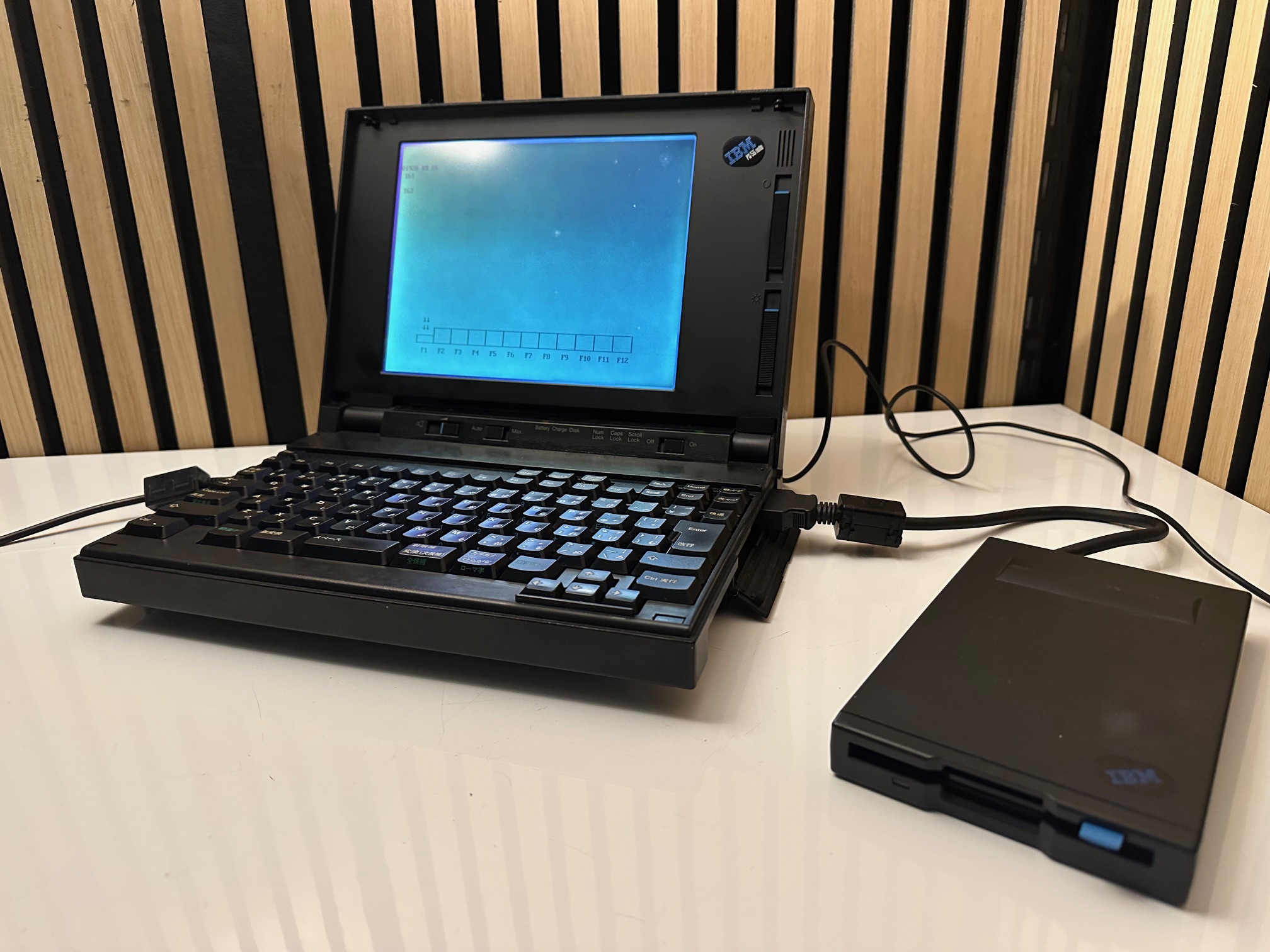
IBM PS/55 note
Due to the success of the Japanese-only IBM PS/55 note range, the international market got Westernised versions called PS/Notes (8523). The ISA N23 and N33 machines evolved into the MCA N51 and colour C23V.
Whilst the notes were not considered revolutionary and were re-hashed PS/55 designs not aligned with IBM's new MCA architecture, you can see why IBM quickly adopted these as an internationally-released model. It was also had a better LCD, backlit screen, was smaller, had a better battery and was half of the cost of a L40 SX.
It's feasible that as the notes headed towards the consumer market, the black Sapper L40SX was heading towards being the 300. This is before IBM decided it needed to focus all internal premium resources on the high end. Value models were now going to be outsourced to Zenith and Premium models were designed and built in house, ultimately killing Sapper's fresh consumer notebook. What ultimately became the consumer's Thinkpad 300 is a nice looking machine, with obvious cost cutting technology and materials and in no way a 'Thinkpad' beyond it's badge.
If you want hints of what the IBM's in-house consumer Thinkpad 300 may have been we only have to look towards the PS/note 2141-182 along with the C23V, 425 and finally, the Thinkpad 350. All of these were quickly superceded by the superior 340 and 360 machines.
Also IBM's CEO had realised computers named after acronyms and numbers could no longer continue - if he didn't know what one of these models was, how could a customer be expected to know? IBM Corporate Naming had arrived.
IBM's First Thinkpad Was Not A Notebook
Thinkpad - initially a brand name given to a pen tablet sporting a monocrhome transflexive digitiser and display, solid state storage, magnesium case and industrial design.It was first shown in late 1991. IBM had been asked if they would consider building a tablet by a company called GO who had recieved an RFP to provide a tablet PC to a large american company 'State Farm'. Go made the Pen touch software and convinced IBM that tablets were going to be the next big thing. Whitestone was the prototype and it's Magnesium chassis was strong, light, and limited radio interference Over the course of it's development, projected sales figures changed from 100,000 units a year to 5,000, and the whole development became a void sucking in people, time, resources and cash.
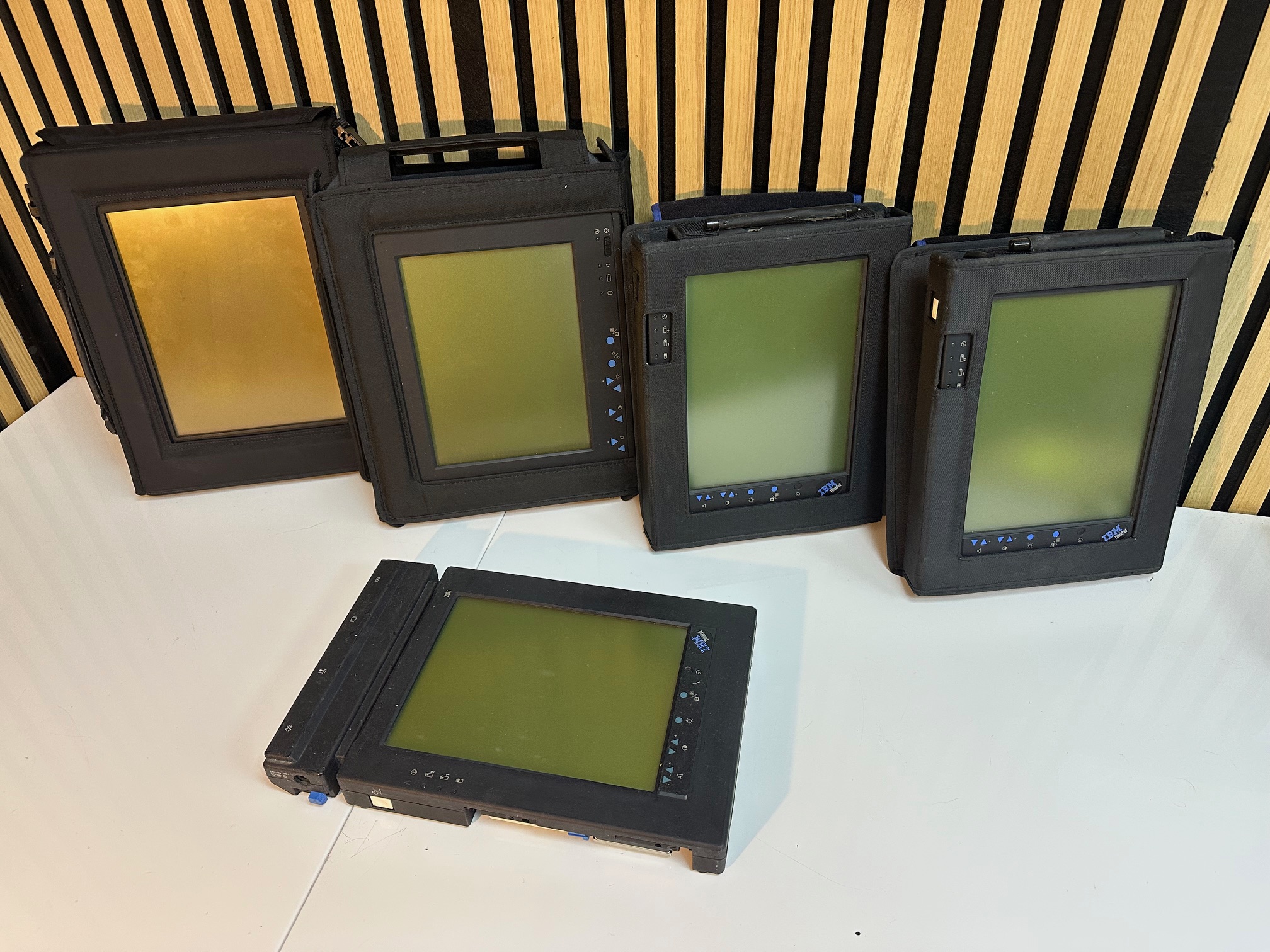
IBM's family of Thinkpad pen tablets (left to right) 700T. 710T, 730T, 730TE
Key advocates of the Thinkpad tablet left after a few years, leaving a severe lack of leadership. Eventually, the machine wasn't widely available until Oct 92. In this six month delay there was faster (with the better 386SL CPU) alternative tablets, other pen operating systems. the 700T lacked PCMCIA and it's NiCd batteries only lasted 45 minutes whereas NiMH lasted 3 hours. Over the course of 1992, by the time the Thinkpad was widely availble, there were too many manufacturers, too few customers, not enough software and the Thinkpad itself was a high price.
Ultimately, along with all the other mobile development, it's team started in Boca Raton but was moved to Yamoto along with all the other mobile stuff, where it would gradually die - mainly because nobody there knew what to do with it. It was a great name for a product 20 years ahead of it's time.
IBM Thinkpad 700T Brochure
The Thinkpad Name Lives On
There were some disagreement internally about re-using the 'Thinkpad' name for a notebook, but most people thought it was too-good a name to let die.
Also around this time, IBM's Tom Selker had developed the Trackpoint II pointing device which enabled mobile users to use a pointer or GUI without an additional peripheral or twice the desk space. Initially this was a 'joystick' which sat between the G an H keys, as with the rest of it's life, it looked like it would get in the way and be horrible to use - but it wasn't!
The original Trackpoint was simply a red rollerball/trackball, seen on standalone devices, the N27SX/CL57 and the Thinkpad 220. Again we have a name which is too good to waste, so IBM decided to re-use the 'Trackpoint' name and show evolution by giving it a II (and eventually III) title.
Here is a video of the prototype 'Trackpoint II' still being called a 'pointing stick' and being trialled on a full size Desktop keyboard:
Later developments of the 'pointing stick' became more red magenta, positiioned slightly lower and incorporated into the L40SX test bed and it's M3 keyboard. Forgive this low-resolution image, but someone shared with me what is possibly an internal presentation title page, which clearly shows the L40SX with a pointing stick!
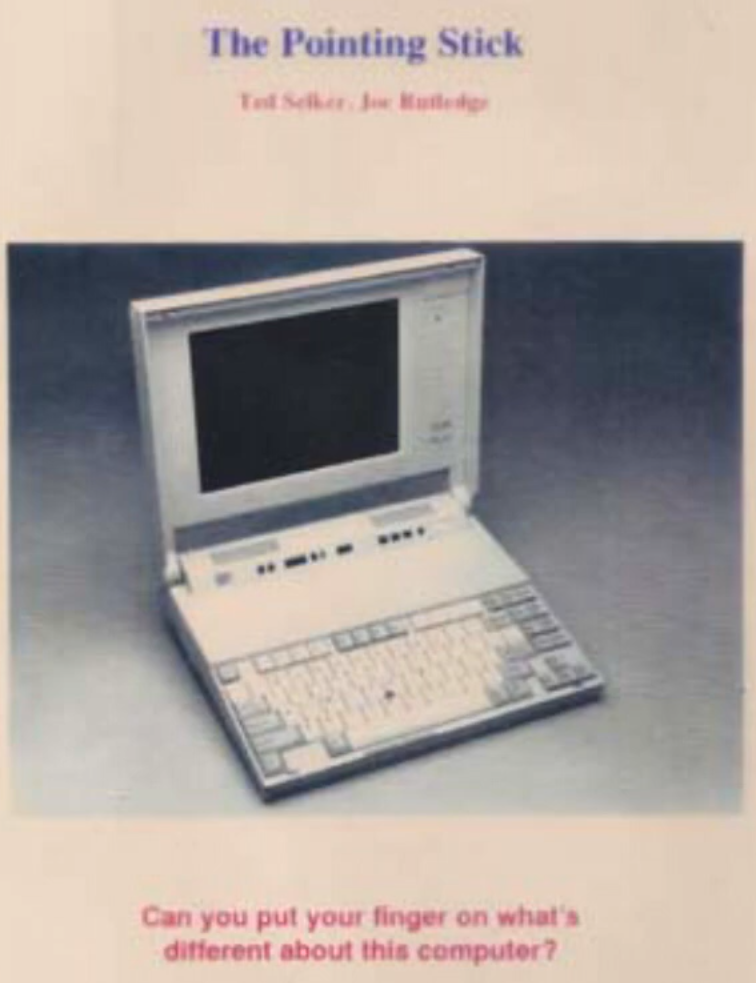
Eventually, what had evolved through dozens of flawed and failed machines, codename "Nectarine" became the PS/2 C52 700C which was also quickly re-branded as the IBM Thinkpad 700C.
Thankfully Corporate Naming meant product managers could now state a case for their machine to have a distinctive title. Can you imagine if the unforgettable IBM Thinkpad had been branded using the legacy conventions? Well you don't have to imagine because for a brief period, it was:
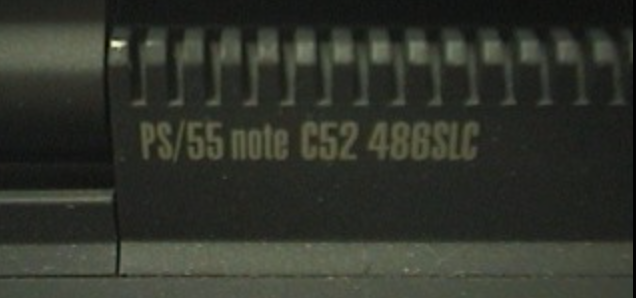
The IBM Thinkpad 700C's Japanese name.
To be fair to IBM Japan, it's possible that geeky machine-family titles suited those who bought PS/55 notes better than a new western name they'd never heard of. But if IBM had any chance of International traction for what an incredible machine they had, the press would need something more snappy.
You could argue that the catchy name, combined with the stark, black design of the Thinkpad (distinctly black, notebook form factor, TFT panel, 486 CPU had all come before, in these different releases) combined with the revolutionary Trackpoint II pointing device, front-facing drives and decent battery life created a billion dollar brand.
IBM Thinkpad 700C
What is a Thinkpad? Quick answer: It's a stylish, futuristic black notebook with a red dot.
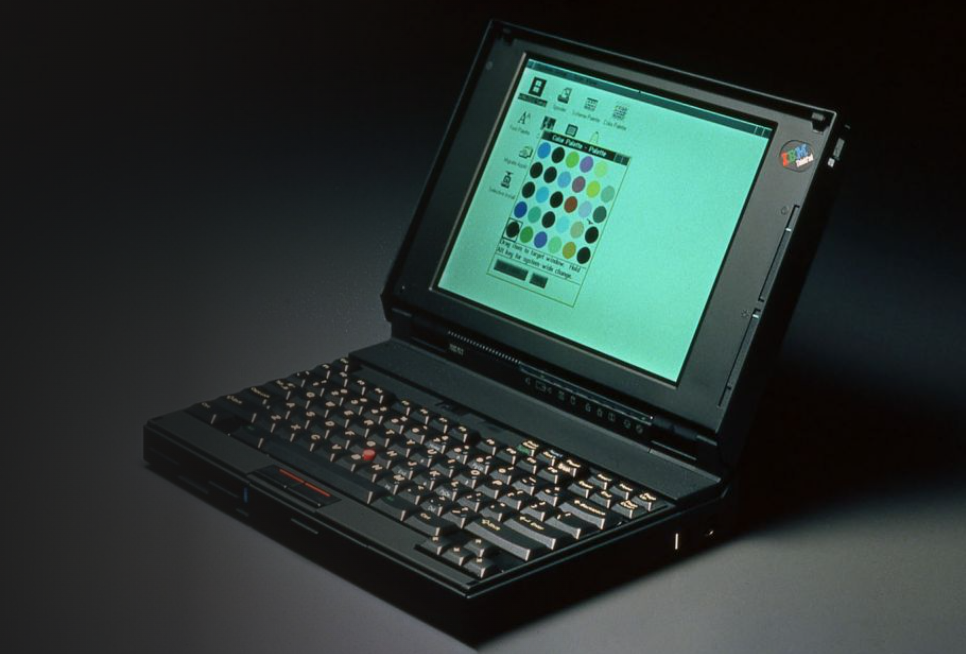
IBM Thinkpad PS/2 M52 / 700C
What first made the Thinkpad stand out?
- A 10.4" TFT colour display - the first and only machine to have such an eye-popping high contrast, high speed, colour display.
- A trackpoint II pointing device (for Windows 3.1) truly solved the issue using Windows and OS/2 on a mobile computer.
- Jet black bento box - distinctive and futuristic.
as well as:
- Outstanding ergonomics - it was thin and light (under 10Lbs) and had the best possible keyboard.
- It fits in a briefcase
- It had an external displayport for presentations, and you could easily switch to and from it.
- It had user-replacable and upgradable parts - namely drives, disks and memory.
- You could work on a tray table on a plane, not bother the person next to you and you wouldn't have eye strain.
It combined:
- The ideas of a folding-lid, high quality keyboard and low-energy display running from batteries originally incorporated into the IBM L40 SX
- The unique (for computers) colour black and the bento box (notebook) form factor of the earliest Japanese notes, through to the ISA C23V and the MCA N51
- The sharp, colour TFT screen from the CL57 SX minturised into the C23V which squeezed the screen into a notebook lid.
- Added a trackpoint II and forward-facing drives and gave it a cool red and black colour scheme
- A snappy name that people could easily recognise and remember. The Thinkpad.
Throughout IBM's stewardship of this brand, there were some dead ends - mostly through weird offshoots and third-party manufacturing. But the core Thinkpad as it's own unique portable computer survives today as a machine you can rely on.
...all except hinges which were still a creeping progression of 'solved' by the time we recieved 750.
IBM's Early Thinkpads Brochure
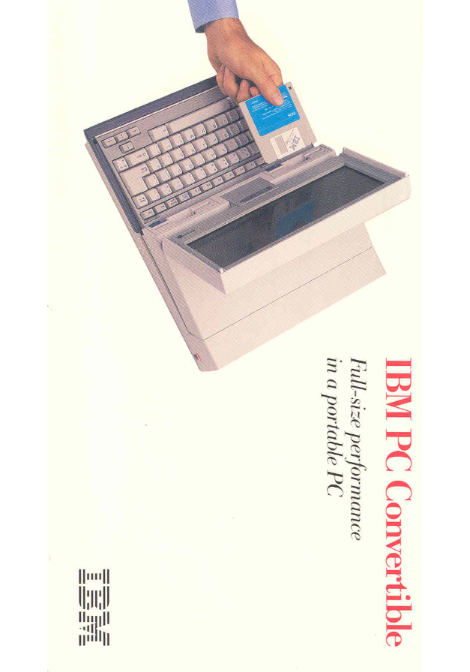
 IBM Convertible Brochure #2
IBM Convertible Brochure #2